Ceiling Fan Downrod
₹624.00 Original price was: ₹624.00.₹520.00Current price is: ₹520.00.
Understanding Ceiling Fan Downrods
Ceiling fan downrods are essential components that play a significant role in the overall functionality and performance of ceiling fans. Their primary purpose is to suspend the fan at the desired height, allowing for optimal airflow and comfort, especially in rooms with elevated ceilings. By adjusting the height of the ceiling fan, downrods facilitate better air circulation, thereby enhancing the cooling effects during warmer months and improving heating efficiency during cooler seasons.
In areas with high ceilings, a ceiling fan that is installed too close to the ceiling can lead to diminished airflow effectiveness. This is where downrods come into play. They provide the necessary length to lower the fan to an optimal position, promoting an expanded coverage area for air distribution. Consequently, selecting appropriate downrods based on ceiling height is crucial for ensuring the ceiling fan operates at its maximum efficiency.
The market offers a variety of downrods, differing in their lengths, finishes, and materials. Common lengths for ceiling fan downrods range from 12 inches to 72 inches, accommodating various ceiling heights and configurations. The materials used in downrod construction typically include metal, such as steel or aluminum, which ensure durability and stability. Some manufacturers also provide downrods made from wood or composite materials, catering to specific aesthetic preferences.
Furthermore, it is essential to consider the compatibility of the downrod with the ceiling fan model. Many brands have specific downrods designed to integrate seamlessly with their fans. With appropriate selection and installation, ceiling fan downrods can greatly enhance the functionality, effectiveness, and appearance of ceiling fans, ensuring comfort in any living space.
Choosing the Right Length for Your Downrod
When installing a ceiling fan, one of the most critical components is the downrod, which connects the fan to the ceiling. Selecting the appropriate downrod length is essential for optimizing airflow and ensuring the fan operates efficiently. Several factors must be considered to determine the ideal downrod length for your ceiling fan installation.
First and foremost, ceiling height plays a vital role in downrod selection. Generally, a ceiling fan should be mounted approximately 7 to 9 feet above the floor for optimal performance. If your ceiling is higher than 9 feet, a downrod extension will be necessary. For standard 8-foot ceilings, a short downrod of 12 inches is usually sufficient. However, as ceilings get taller, longer downrods, such as 24 to 48 inches, may be required to maintain the proper distance from the floor.
Another factor to consider is the size of the ceiling fan itself. Larger fans typically generate more airflow and may require increased clearance from the ceiling to function effectively. Smaller fans, on the other hand, can be positioned closer to the ceiling. It is essential to balance fan size with downrod length to prevent airflow obstruction and enhance the effectiveness of the unit.
Additionally, the airflow requirements of the room must not be overlooked. Rooms with high ceilings or open spaces may necessitate longer downrods to enhance air circulation throughout the area. A good rule of thumb is to maintain at least 18 inches of clearance from the blades to the ceiling, ensuring sufficient airflow.
In conclusion, choosing the right downrod length involves carefully considering your ceiling height, fan size, and airflow needs. By following these guidelines, homeowners can achieve maximum efficiency and effectiveness with their ceiling fan installation.
Installation Process for Ceiling Fan Downrods
Installing a ceiling fan downrod is a systematic process that requires careful attention to safety and detail. Before beginning, ensure you have the necessary tools at your disposal: a ladder, screwdriver, pliers, wire cutters, electrical tape, and a voltage tester. It is essential to turn off the power at the circuit breaker to prevent any accidents during the installation process.
Start by removing the existing ceiling fan, if applicable. Detach it by unscrewing any mounting hardware and disconnecting the wires, taking care to remember their connections by labeling or taking a photo. Next, secure the downrod to the fan motor by inserting the downrod through the mounting bracket, followed by tightening the set screws to hold it in place firmly. When attaching the downrod, ensure that it is level to prevent wobbling.
Once the downrod is connected to the ceiling fan, measure and adjust the length of the downrod if necessary, especially in rooms with high ceilings. The ideal distance from the blades to the floor should be between 7 to 9 feet to maximize airflow. Next, attach the downrod to the ceiling mount. This often involves connecting the downrod to the ceiling bracket using a pin or bolt, ensuring all connections are secure.
Before finalizing the installation, ensure all wiring connections are secure. Connect the fan wires to the ceiling wires, matching the colors: black to black (hot) and white to white (neutral). If the fan has a ground wire, connect it to the ground wire in the ceiling. After securing all wire connections with electrical tape, carefully tuck them into the ceiling mount before tightening any remaining screws.
Once the fan is installed, turn the power back on and test the fan’s operation. If the fan wobbles or makes noise, you may need to adjust the mounting or ensure all screws are tightened. Following these steps will help ensure a safe and successful installation of your ceiling fan downrod.
Maintenance and Care for Downrods
Maintaining ceiling fan downrods is essential for ensuring their longevity and optimal performance. Regular care involves not only cleaning but also inspecting the downrods for signs of wear and tear that may impact your ceiling fan’s functionality. The downrod, which connects the fan to the mounting bracket in the ceiling, is subject to various stresses and environmental factors that may cause it to deteriorate over time.
To begin your maintenance routine, dust and wipe down the downrod with a soft cloth at least once a month. This helps to prevent the buildup of dirt and grime that can hinder performance. It is also advisable to use a gentle cleaning solution for stubborn stains, ensuring that any cleaning product is safe for metal surfaces to prevent corrosion.
During periodic inspections, pay attention to signs of rust or corrosion, as this can become a significant issue if left unaddressed. If you discover any rust, it is essential to address it promptly. Light rust can often be removed using fine steel wool or a rust-inhibiting product. However, severe corrosion may necessitate the replacement of the downrod entirely.
Another critical aspect of maintenance is checking for wobbling. If your ceiling fan wobbles excessively during operation, this may indicate potential issues with the downrod or its connection. Ensure that all screws and bolts are securely fastened and that the downrod is properly aligned. If problems persist, a professional inspection may be warranted to diagnose any underlying issues related to the mounting or the fan itself.
In conclusion, regular maintenance and careful monitoring of your ceiling fan’s downrods can significantly enhance their lifespan and performance. Taking a proactive approach will not only help maintain a safe environment but also ensure that your ceiling fan operates efficiently and effectively over the years.
Exploring Aesthetic Options and Customizations
When selecting ceiling fan downrods, aesthetic choices play a crucial role in complementing the overall design of a space. Downrods are not merely functional components; they can also serve as attractive design elements that enhance the visual appeal of a room. Various styles and finishes are available, allowing homeowners to tailor ceiling fan installations to match their interior decor seamlessly. From sleek and modern to rustic and traditional, the variety in design means that there is likely a suitable option for every aesthetic preference.
Available finishes include contemporary metallic hues, such as brushed nickel or chrome, which can impart a polished look, while wooden finishes can add warmth and texture, perfect for spaces that incorporate natural materials. Matte black and oil-rubbed bronze provide elegant alternatives, each contributing distinctly to a room’s character. Beyond mere finishes, the style of the downrod can vary significantly; longer rods may create a dramatic effect in spacious rooms, whereas shorter ones can suit smaller, cozier areas effectively. Thus, considering the balance of heights and styles is essential for aesthetic harmony.
Customizability extends beyond simple colors and materials. Homeowners might explore decorative options that showcase their personal style. For instance, ornate designs or unique mounting accessories can be integrated into the downrod system to create a more personalized touch. By choosing customizable components, individuals can ensure that their ceiling fan downrods reflect their tastes while harmonizing with their overall design scheme.
Selecting the appropriate downrod design does not only bolster the aesthetic quality but also maintains functionality. The integration of beautiful decorative elements should not compromise the effectiveness of the fan. Hence, a thoughtful approach to design choices can ultimately enhance both the visual allure and operational success of ceiling fans in any given environment.
| Ceiling Fan Brand Name | aco, ACTIVA, Aervinten, AGE, AIRDEC, AIRELEC, Airhill, AKSHARA FAN, Almo, ALVIS, AMJ, Anchor By Panasonic, Aparna, Astra, Athots, Atomberg, ATUL, BAJAJ, befunky, BERLIA STEELS PVT LTD, Bevel, Bison, Blue Me, blue sun, BlueBerry's, Brighty, Candes, CG, Chief Marshal, cojo, Cosas, Cospex, Crompton, dakshrup, DAWAR, DIGISMART, DRUMSTONE, DV NOVAKING, EAGLE, ecotejas, Elevea, Elixxeton US, Emflux, Enamic UK, Engarc, Eskon, Eurostar, EVEREST, fest forever, Flipkart SmartBuy, FOUR STAR, GESTOR, GM, good choice, GRANTON, Halcyon, HANEUL, HANS LIGHTINGS, HARMAN INDUSTRIES, HAVELLS, HAWAFANS, Herrricane, Hi Choice, Hindware, IMPEX, Indigo, INNO ONE, Kanishka, Kenstar, kenvi us, Khaitan, Kimatsu, KOI, KUHL, KWW, kysa, Lalson's, Lazer, LionBolt, Longway, LONGWINGS, LUKER, LUMINOUS, Luton, luxer, MAKE LIFE BETTER, MARC, Max Speed, Maxotech, MAYA, MinMAX, MODI, Mokshi, Moonstruck, MOVIE STARS, NAVDEVI, Nex, oceco, OMEGA'S, OMEN, oremate+, oreole, Orient Electric, ORPAT, Orzinpro, OSTN, ottomate, Panasonic, Paras Green, Polar, Polycab, PROLIFE, QUALX, Raptas, RediGo, Relaxo, Revolta, Rhobos, RPM, RPM Airtech, Sameer, Sampri, Sansui, SATYA SUNDER, saveguard, SHATAK, SHIFY, silver king, Singer, sm luxury, Smuf, STANDARD, STAR JIVA, Stardom, STARSHINE, Summercool, SUMMERKING, Sun Flame, Sunflame, SUNGOLD, suniore, Superfan, SURYA, Sword, TechKing, THERMO KING, THERMOCOOL, TIFOZ, ULTICA, UltinoPro, UNIFAN, Urja Enterprise, USHA, V-Guard, vandana, ventum, Venus, VG, Vilaxo, vindian, VISRA, Voltcare, VRS, Willett, Xpert, ZENTAX, zigma, ZORIX, Zunpulse, ZunVolt |
|---|
Only logged in customers who have purchased this product may leave a review.
Related products
-
Ceiling Fan Parts
Ceiling Fan Mounting Bracket/Hook
Rated 0 out of 5₹312.00Original price was: ₹312.00.₹260.00Current price is: ₹260.00. Select options This product has multiple variants. The options may be chosen on the product page -
Ceiling Fan Parts
Ceiling Fan Blades
Rated 0 out of 5₹936.00Original price was: ₹936.00.₹780.00Current price is: ₹780.00. Select options This product has multiple variants. The options may be chosen on the product page -
Ceiling Fan Parts
Ceiling Fan Regulator
Rated 0 out of 5₹546.00Original price was: ₹546.00.₹455.00Current price is: ₹455.00. Select options This product has multiple variants. The options may be chosen on the product page -
Ceiling Fan Parts
Ceiling Fan Light Kit
Rated 0 out of 5₹3,120.00Original price was: ₹3,120.00.₹2,600.00Current price is: ₹2,600.00. Select options This product has multiple variants. The options may be chosen on the product page

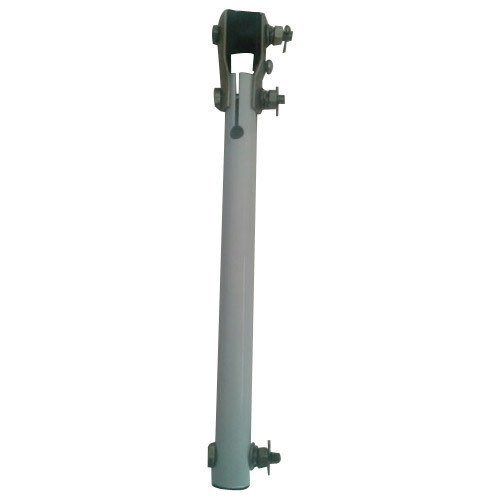
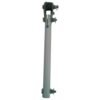
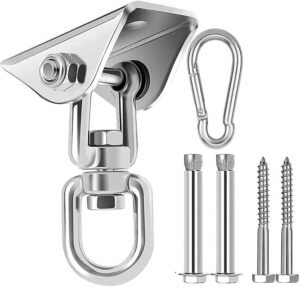
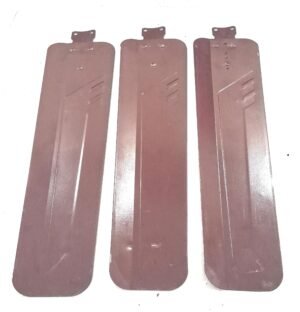
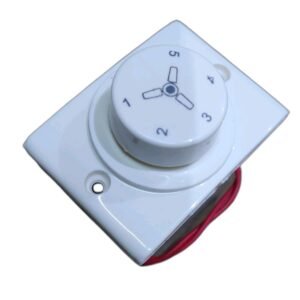
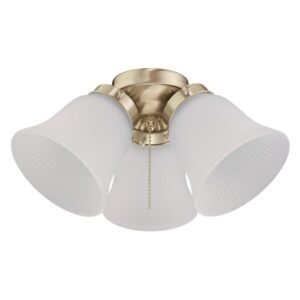
Reviews
There are no reviews yet.